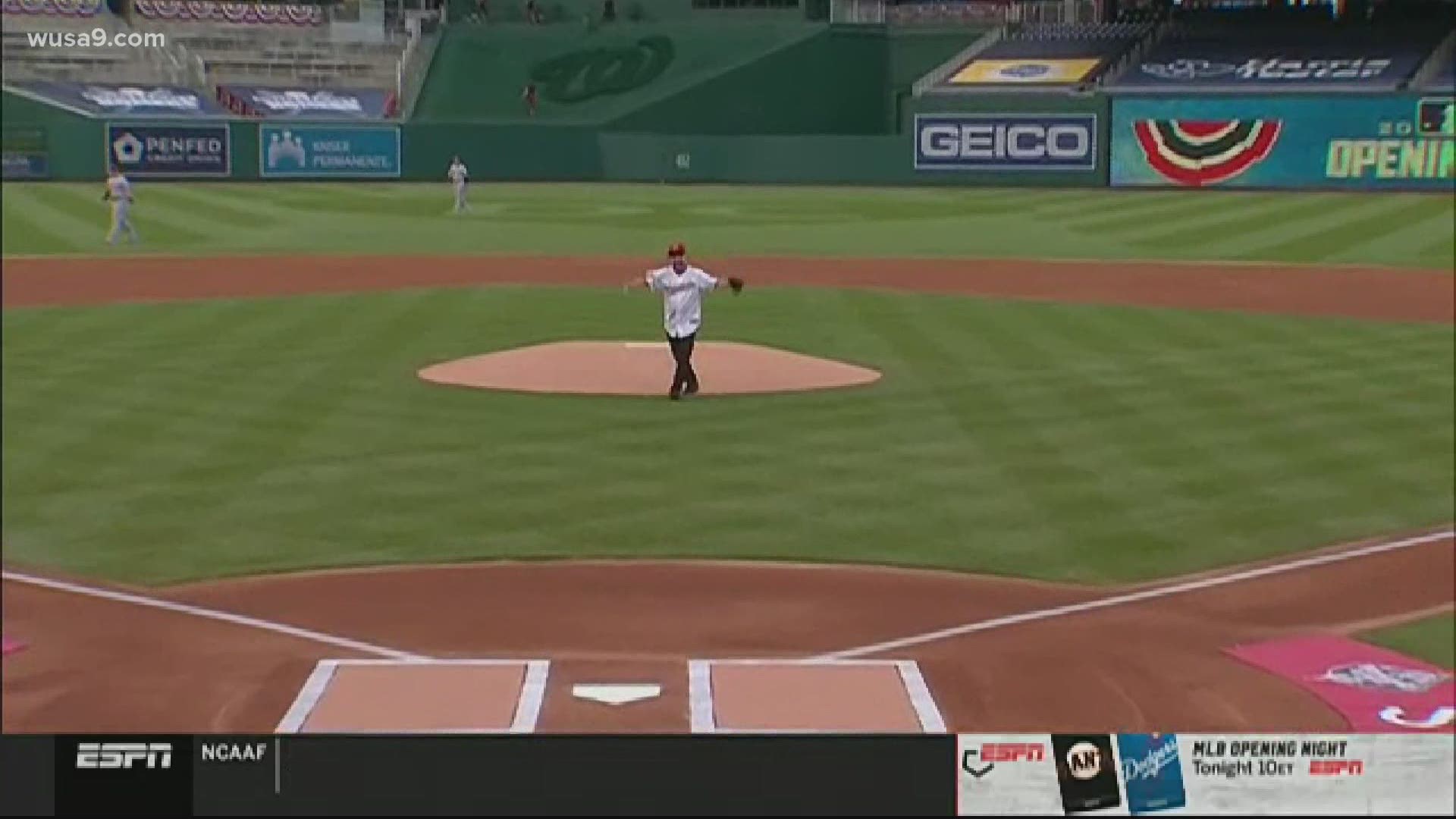WASHINGTON — Opening Day for Major League Baseball starts in the spring but has left fans in the cold. The Washington Nationals will start their 2021 season on April 1 and temperatures are expected to drop as low as the 30s by the end of the game.
"That's a challenge for everybody," said Nationals pitcher Max Scherzer. "It's been great in the Florida weather but moving for a hot to cold game, that's just part of the gig."
Cold weather has played a role in postseason baseball games since the 1800s.
A hit ball can travel farther on a hot, humid day, compared to on a cold one. This is because the air is less dense when the air is warm. If a home run travels 400 feet at a temperature of 75 degrees Fahrenheit, it would travel 408 feet at 95 degrees Fahrenheit.
The Nationals opened their 2020 season in July because COVID-19 put delayed the start of the season. This will be the coldest weather the Nationals have played in since the 2019 World Series against the Houston Astros. Temperatures were in the 50s during that magical run. That's not cold but there's historical data to support even the impact of temperatures below 60 degrees Fahrenheit.
A study published by the American Meteorological Society (AMS) in 2013 concluded that "offensive production is higher in warm temperatures [above 83 degrees Fahrenheit] compared to cold temperatures [below 60 degrees Fahrenheit] ... Runs scored, batting average, slugging percentage and home runs show significant increases ... in warm temperatures compared to cold temperatures."
Runs scored decreased from an average of a combined 10.08 per game in warm temperatures [above 83 degrees Fahrenheit] to 8.95 per game in cold temperatures [below 60 degrees Fahrenheit], the study showed, which is an 11.2% decline. "The batters have an advantage when it is hot," said AccuWeather Founder and CEO Dr. Joel N. Myers, "because the air is more dense when it is cold."
So, when it's cold, that's bad for the hitters, according to the research, right? But what about the pitchers?
"I don't think anyone has fun pitching when it's cold," longtime baseball executive Wayne Krivsky told AccuWeather. "Really, nobody likes playing in the cold weather. If you don't hit the ball on the sweet part of the bat, it vibrates in your hands. It's a big issue."
Krivsky gives the cold-weather edge to the pitchers. "The advantage goes to the pitcher, by more than a little bit," said Krivsky, who has worked in the front offices of five MLB teams. "Nobody likes to hit when it's that cold. It's just so abnormal from what you're used to during the year."
Abnormal hardly describes the oddest World Series weather-wise. The 1997 World Series was an extreme case of extreme weather. It was a balmy 84 degrees Fahrenheit at game time in Miami for Game 1 before dipping to 38 degrees Fahrenheit for Game 4 in Cleveland, the coldest recorded game in World Series history. There was snow during batting practice and wind chill readings during the game were as low as 18 degrees Fahrenheit.
"The pitchers always have the advantage in the cold weather because it's hard for hitters to feel the bat," said McLaren, who briefly managed the Nationals and Seattle Mariners and has been an assistant coach for many teams. "I know most good pitchers would like to throw in cold weather because they know the hitters are not loose, they're stiff, they have a lot of clothes on to stay warm.
"And even when the batter gets the ball on the good part of the bat, on real cold days it's usually thick air and moist and the ball doesn't travel as far," McLaren added.
Science supports McLaren's observation. After investigating how temperature, humidity and wind affect fly ball distances at numerous MLB stadiums, two researchers found that "fly balls in cool temperatures (at most 50 degrees Fahrenheit) travel on average 16 feet less compared to warm temperatures (at least 90 degrees Fahrenheit)."
For pitchers, humidity is the legal version of the old outlawed spitball since it's a key to help them with their grip on pitches. That's also why pitchers like to work up a sweat on cold days, blow on their hands, and lick their fingers to maximize the moisture needed for a good grip.
"Cold and dry [air] exacerbates the slippery-ball issue, making it more difficult to get spin on the ball," Alan Nathan, a professor emeritus of physics at the University of Illinois told FanGraphs. "Less spin means less movement [on their pitches.]"
Turns out when it comes to the Opening Day and the weather, the forecast may be more valuable than any pregame sports predictions.


